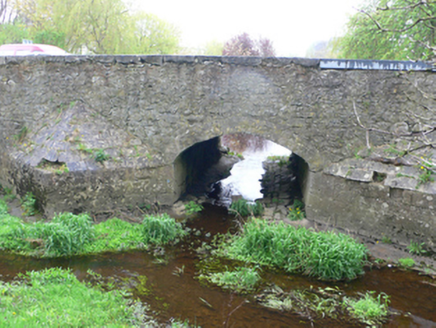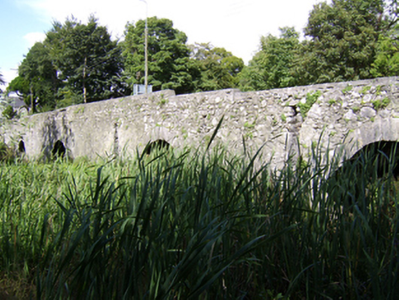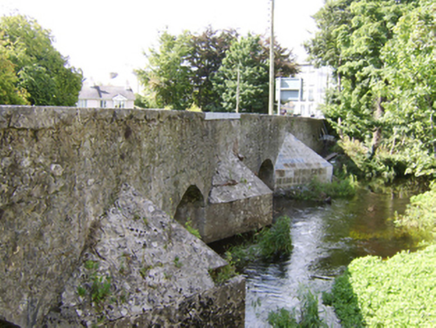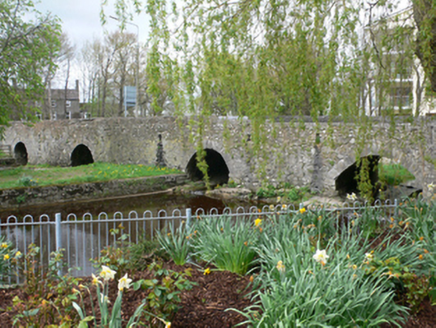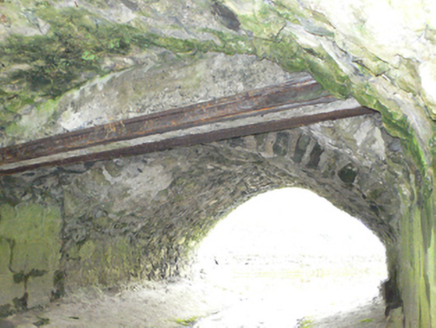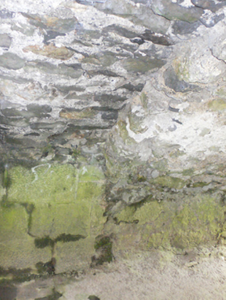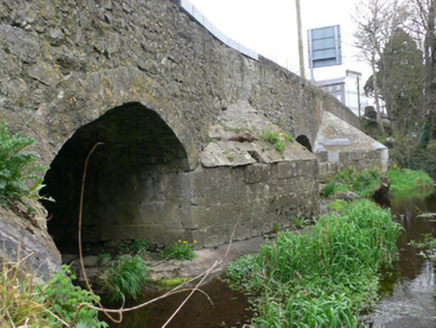Survey Data
Reg No
30333029
Rating
Regional
Categories of Special Interest
Archaeological, Architectural, Historical, Technical
Original Use
Bridge
In Use As
Bridge
Date
1570 - 1750
Coordinates
185505, 231159
Date Recorded
04/09/2009
Date Updated
--/--/--
Description
Four-arch limestone road bridge over one largely dry branch of River Suck, built c.1745, incorporating earlier fabric from bridge of c.1575. Further arch at slight distance to west. North half of depth of bridge is from the later period. Rubble walls to elevations and cut stone to soffits of later half of structure. Soffits of later part are slightly higher. Voussoirs of original north elevation are less dressed than either of current elevations. Dressed voussoirs of varying quality. Arches to south elevation slightly pointed segmental to round and those to north are elliptical, except for westmost which is more like arches of south elevation. Rubble stone parapet walls with cut-stone copings, curving to south parapet wall. Heavy cut-stone V-cutwaters to north elevation. Island in middle of river on south side of bridge forming park, with wrought-iron pedestrian gate set in parapet wall.
Appraisal
This long bridge of massive construction forms a prominent landmark in Ballinasloe. The bridge is a technical, architectural and engineering achievement. It was doubled in width in the mid-eighteenth century and the southern half is essentially late medieval in date, likely the bridge erected by Sir Henry Sidney, Lord Deputy of Ireland in the sixteenth century. The irregular nature of the original arches and voussoirs is typical of earlier bridges. The success of Ballinasloe Horse Fair was partly due to the good road infrastructure, of which this is an important part, linking animals raised by breeders in the west to buyers in the east.
